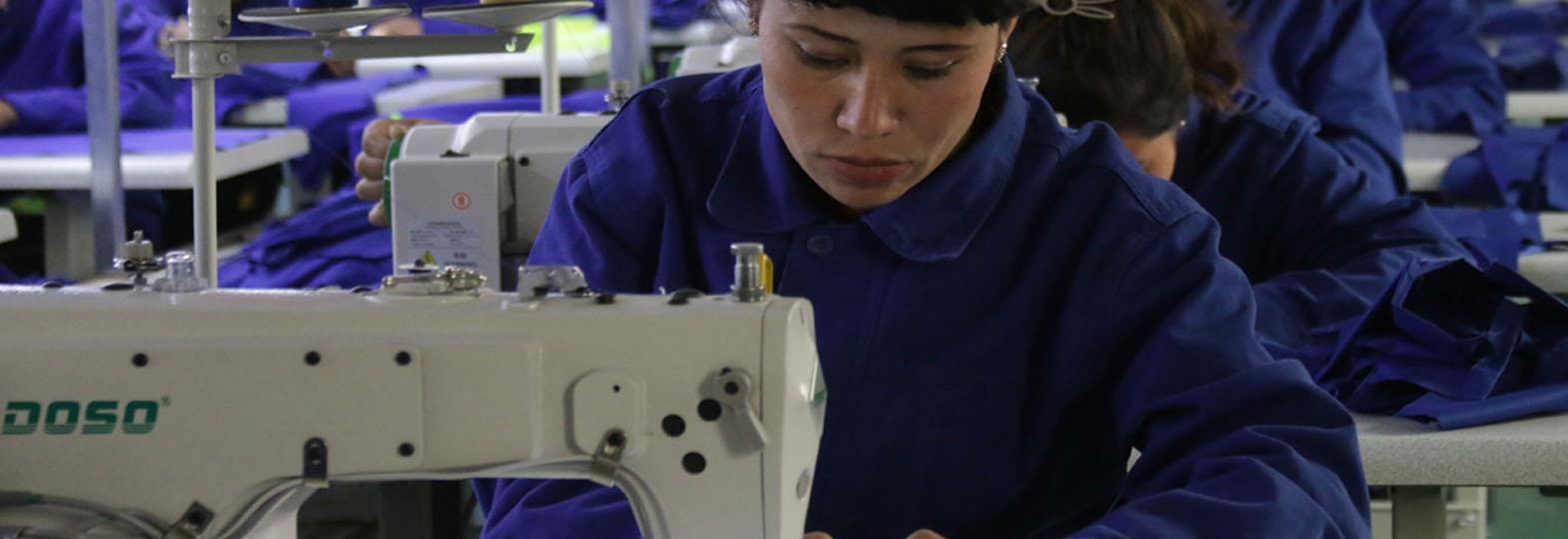Globalisation allowed for fashion brands and retailers to mass produce at low cost leading to exploitation of workers. The industry must now adapt with conscious consumerism and evolving digitalisation.
Historically, fashion was primarily for upper-class civilians and transmitted vertically to the lower class. Fashion was expensive due to the expert craftsmanship and quality of the material that was used to create the pieces. The first fashion house was opened in 1826 by fashion designer Charles Fredeick Worth, who began to advise customers on what type of clothing would suit them best. Clothes were custom-made to fit clients, produced to the highest quality, and designed and sewn by experts. The process of designing, tailoring and producing the clothes resulted in a lengthy process which was later termed haute couture. Fashion houses showcased two collections of clothing a year in affluent cities, allowing clients to place orders depending on which pieces they liked the most.
Previously, the fashion industry did not cause much destruction. Clothes were made and worn in the same place and were created from natural fibres that could biodegrade once they had served their purpose. In the 20th century, this all changed. Synthetic fibres were developed, clothes stores were opened, consumer demand was growing and most importantly globalisation was underway.
Globalisation opened the doors of possibility for apparel and has arguably had the most significant impact on the industry. Globalisation facilitated low-cost labour and international market development, meaning that brand could now produce clothes faster and cheaper than ever before and ship to global markets. Globalisation allowed the apparel industry to indulge in more styles, influences and methods of production. Consequently, fashion trends and styles have now become available to consumers globally and what was once two collections a year of clothing, is now a massive 52 micro seasons of fashion designs annually.
Social Impacts of Globalisation on Apparel
Globalisation may have been beneficial for brands and consumers, however, the priority for brands to seek cheaper and faster production has led to, in some cases, exploitation and oppression of garment workers. Western countries outsource their production to developing countries where wages are extremely low. For example, in Bangladesh, the second-largest apparel exporter after China, the legal minimum wage for garment workers is $96 a month1.
In addition to exploiting workers for cheap wages, garment factories are also dangerous; the synthetic materials pose toxic risks to garment workers’ health and are detrimental to the surrounding ecosystems2. At times, employees may have to work in factories with little to no ventilation, breathing in toxic substances, inhaling fibre dust and sand, and are heavily exposed to fires, injuries, disease, and inhumanely high temperatures.
The processes that are used to produce apparel in garment factories also impact the environment. The fashion industry uses 93 billion cubic metres of water and is responsible for 20 per cent of global wastewater3. Fast fashion brands contribute to around 90 per cent of water pollution4 due to their refusal of wastewater treatment. This water pollution has devastating socio-economic impacts across communities that live nearby the factories. Livelihoods of fishermen are lost due to the chemicals that kill marine life; communities are no longer able to rely on the river water for cooking, drinking and washing; and if the water is consumed there is an increased risk of people contracting diseases, including cancer and cholera5.
With sustainability the current zeitgeist of society and defining the facets of life, consumers are more aware of the impacts that their consumerist behaviours might be having. The environmentally and socially conscious movement is fully underway, and therefore brands and retailers are having to re-evaluate every aspect of their supply chain, including where and how they source their apparel.
How Social Change is Impacting Apparel Sourcing
Brands and retailers in the apparel industry may be able to outsource and produce mass products at low cost, however as conscious consumerism rises, consumers are holding brands accountable for their social and environmental impacts.
This need for social change in the apparel industry was particularly evident during COVID-19, whereby the industry’s production and sourcing operations were exposed. During the pandemic, billions of livelihoods were upended, with retail shops closed and online sales massively reduced. However, it was those most vulnerable who were impacted the most. In a report on The impact of Covid-19 on the people who make our clothes, global movement Fashion Revolution said, “Brands cancelled more than $40 billion of finished in-production orders of goods from factories and suppliers, who were left footing huge bills for materials and struggling to pay their workers, keep workers employed, provide furlough or severance pay, and keep their businesses afloat.”6
The social injustice associated with these cancellations was difficult to ignore, with global inequality and exploitation revealed to the world. Garment workers who already faced vulnerabilities and difficulties affording life’s necessities were suddenly left with nothing. Hours and wages declined, and millions were fired as brands slashed their production lines. This disregard for moral responsibility sent shockwaves through the world. It was found that 31 garment exporting factories in nine countries fired workers and denied them severance pay which they legally earned. It was estimated that these factories failed to pay 37,637 workers their dues totalling $39.8 million7.
There were also reports from Leicester in the UK that garment factories remained opened during the lockdown8 putting their workers at risk of COVID-19 infections. In Leicester, the majority of garment workers are from minority ethnic groups and are vulnerable due to their immigration status, language skills, integration in the community and unemployment rates. This further reiterates the discrimination and inequalities associated with the apparel industry’s outsourcing and production lines.
After COVID-19, however, there has been a shift in social expectations from consumers. Business as usual is no longer acceptable – brands and retailers are having to transition away from their previous methods of mass production at low cost and source their products through more socially responsible routes. Corporate social responsibility (CSR) is now a major concept concerning consumers’ purchasing habits, with 70 per cent of consumers wanting to know how the brands they support are addressing social and environmental issues and 46 per cent paying close attention to these efforts when making purchasing decisions.9 So, retailers and brands have to incorporate moral and ethical responsibility prioritising treatment, safeguarding and payment of those on the production line.
How Technology and Digitalisation is Impacting Apparel Sourcing
Today, technology is integrated into every aspect of society, with each industry becoming increasingly reliant on the digital world. The apparel industry is no exception, with new developments in technology being implemented throughout the value chain, providing an accessible means for brands and retailers to meet their sustainable development goals.
Digitalisation can have a variety of impacts, transforming “how products are designed, how supply chains are managed, how and where production takes place, how logistics systems are automated and run, and how products are marketed, sold and delivered to the consumer.”10 In this way, digitalisation plays a vital role in the adaptation of sourcing products, which incorporate more ethical and environmental processes.
Technologies Transforming Apparel Value Chain
Blockchain
By integrating blockchain solutions, brands can track the manufacturing of their products right from the raw material stage to the end product. Blockchain promotes communication between those involved in the value chain and the retailer, creating trust between all industry actors. Increased communication and tracking can both be used to promote transparency to the brand and the consumer.
Transparency is becoming progressively more important to consumers – in recent surveys over 90 per cent of consumers said that transparency plays an important role in their purchasing decisions,11 and 94 per cent of respondents said that they will stay loyal to a transparent brand.12 It is no longer enough for brands to simply state bold claims without evidencing them. Brands are being increasingly called out for greenwashing, and so, through the implementation of blockchain solutions, they can produce evidence to back up their claims. Many fashion brands are now launching pilot programmes to trace their supply chains using blockchain technology, including H&M and Kering.
Radio-frequency Identification (RFID)
RFID are tags that can be placed onto items and act like digital barcodes enabling each item of clothing to be individually identified using radio frequency waves. RFID tags can help brands and retailers track their products’ production line from start to finish, providing valuable insight into the complex processes involved in their supply chain. These tags promote transparency into a product’s development, boasting both social and environmental benefits. Transparency as mentioned previously plays an important role in modern-day consumerism. There is an increase in brands now successfully using RFID tags to provide them with crucial information about their business operations, including Adidas, Burberry, Prada, Decathlon, Nike, Tommy Hilfiger and many more.
Artificial Intelligence (AI)
Overproduction is a major issue with apparel – around 30 per cent13 of all clothes produced are never sold. AI can help by making accurate predictions of trends, understanding customer behaviour, and optimising workflows and supply chain operations. Brands and retailers can use this knowledge to only produce what is needed, reducing their production rates, whilst simultaneously minimising wastage. AI can be a powerful tool to not only benefit those in their supply chain on a socially responsible level but also environmentally too. The implementation of AI is now used by big fashion brands including Dior, Zara, H&M, and Nike14. They all use AI in their business models to optimise routine processes and tasks, predict trend forecasts and amplify the customer experience.
3D Design Software
3D design software can be used by brands and retailers to sample and adapt the design of products until they are ready to go into production, promoting the efficiency of the design process and reducing the amount of labour required during the manufacturing process. 3D design also gives designers the power to experiment with their designs digitally, allowing them more creative scope. 3D design software can benefit workers involved in the supply chain whilst reducing production costs for brands and waste. Fashion brand Finesse is the first AI-led fashion house which uses AI and machine learning (ML) to create looks that the consumer can choose from, in hope of tackling overproduction and waste.
Conclusion
Going digital is a vital step for the world of apparel and can have a variety of social benefits for garment workers. These benefits are crucial as the consumer and the world put pressure on brands’ CSR. Through digitalisation, transparency and traceability can be promoted, increasing brand awareness surrounding the sourcing of their products and those involved in the production line. Transparency and traceability are becoming imperative for the consumer, and allow brands to address any implicated exploitation. Digitalisation can also be used for brands to gain insight into consumer behaviour and trends which can help them further understand their production rates.
It should be acknowledged that fast fashion still requires workers to produce at speed and low cost. Therefore, if technologies, such as AI, predict that more clothes need to be produced then more pressure would be placed on workers, having a negative effect. In addition to this, transparency and traceability can help to alleviate some of the social disparities put on the workers in production but only if the brands and retailers seek ways to address the problems. Technology can expose social exploitation and oppression of garment workers, however, for ethical change, it is up to the brands and retailers to implement policies protecting their workers in the production line.
The apparel industry is far from perfect and has to transform in almost every area of its supply chain. Outsourcing to people in the global south and ethnic minorities can be done in a way that is not exploitative or oppressive and can benefit people by offering them secure, safe and fair working conditions. This change is happening and is driven by the alignment of evolving digitalisation, conscious consumerism and brand accountability.









Comments